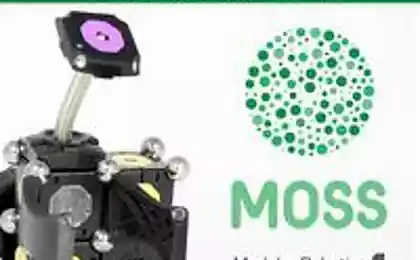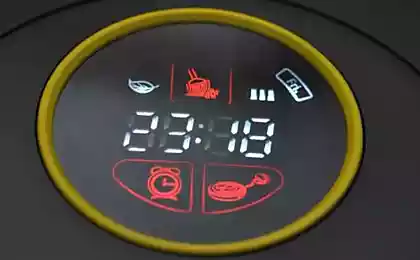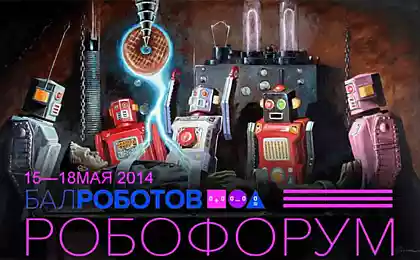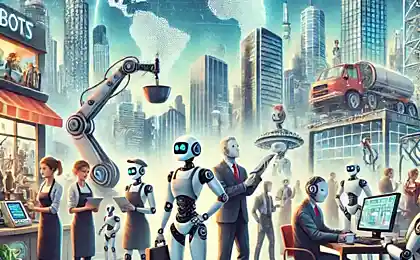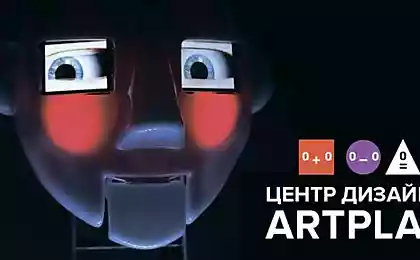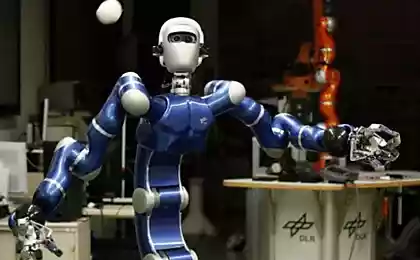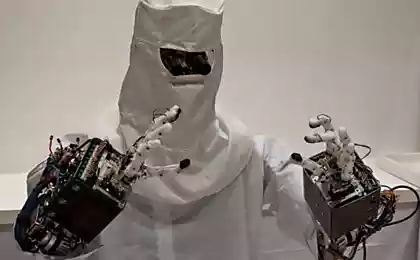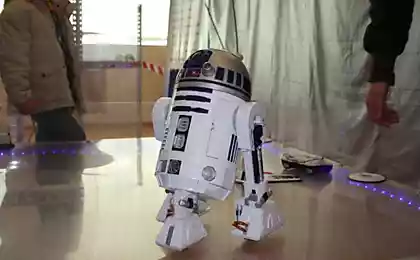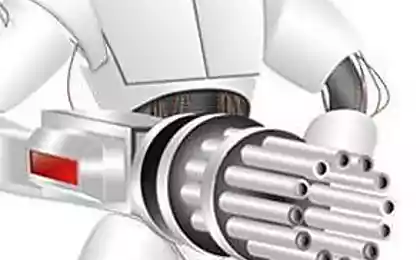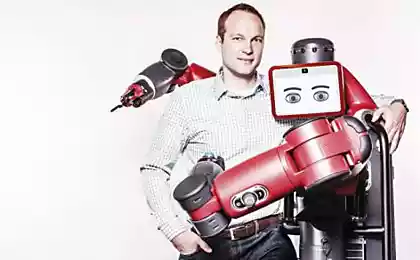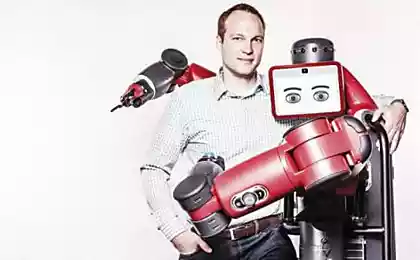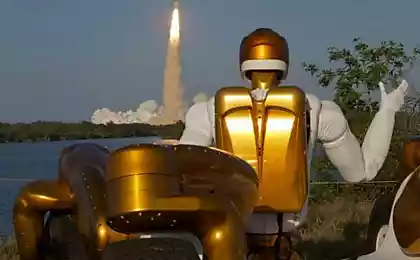533
10 incredible robots that were created without modern technology

The word "robot" was first coined Karel čapek in a sci-Fi play "R. U. R, or Rossum's Universal Robots" to describe an artificial person. The word "robot" comes from the Czech word robotnik, which means "work".
Modern robots are keeping pace with the modern revolution and achievements in the field of artificial intelligence. But basic analog mechanisms that mimic human or animal actions, have long existed. Even if you are not interested in robotics, these ancient devices need to enchant you with their ingenuity. Created without benefit of electricity or precision equipment, they are a testimony to the boundless creative potential of mankind.
Moving statues

The literature of antiquity abounds with stories about artificial people. Possible references to them can be called humanoid maids in Homer's Iliad and the moving statues, created by Daedalus, the legendary father of Icarus. The Greeks also mentioned that the God Hephaestus made the Cretan king Minos giant bronze man named Talos, who defended his Kingdom. Talos was practically invulnerable, and the only vulnerable spot was his heel, where blood lived passed close to the metal skin. Talos destroyed, pierced his ankle and cut mine.
Stories of the moving statues in ancient Egypt describe one made by the priests of Ammon in about 1100 BC, the Statue was elected the following Pharaoh, stretching out his hand and pointing to the man from the Royal family. Driving statues were obviously very useful for religious propaganda. In Egypt they were considered the vessels through which reincarnated soul.
Perhaps these vehicles were not mythological. Written evidence indicate that the ancient Egyptians had enough knowledge of the elementary principles of mechanics to build a non-digital robots, or so-called automatons. The usual method of construction included a system of ropes and pulleys. The sacred flame was lit, heated and expanded air, which activated the system.
For centuries this process has been improved and perfected. Greek ctesibius of Alexandria built an automaton, driven by a Cam mechanism (disk-like devices), which allowed him to sit or stand, changing her pose. None of the works Kasibu even written, has not survived to our times, but later the engineers of the ancient times referred to his plans for the automatons working on the hydraulics, steam and Pneumatics. Technology of the time allowed the automatons to perform only a limited number of the same movements, but we can still trace the origin of the robots to Cecilia.
"The claw" Strictly speaking, krasnopolskoe gun Archimedes was not a robot, because he needed the crane operator. However, the "Claw" was a precursor of an industrial robot-manipulator, which is found in modern factories. "Claw" lifted enemy ships out of the water and overturned them.
It was designed specifically against the Roman invaders of Syracuse in 213 BC by the Historian Polybius described the scene when Roman ships approached the city walls facing the sea. A giant hand swooped down on the enemy fleet and "raised the nose of the ship from the water and set it upright on the stern". Then the operator "fastened the machine, making it immovable, and then launched some kind of mechanism that dropped the hook and chain. The ships then either turned over, getting up on bad water or was filled with confusion and sea water".
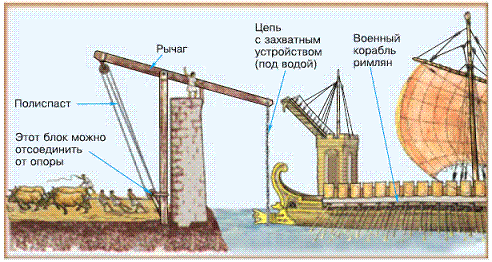
Plutarch adds: "Often seen a terrible sight: the ship rising from the water into the air and spun in one place, while every man was tipped out and thrown into an uncertain direction."
"The claw" was a brilliant execution of the two great laws of Archimedes — the law of the lever and law of buoyancy, which together could flip multi-ton vehicles. Knowledge of forces and equilibrium was used to calculate the small amount of effort force.
In fact, we have no direct evidence that Archimedes ever created this superweapon, and ancient historians, of course, could significantly exaggerate his achievements, even if such a device really existed. But recent experiments engineers proved that "Claw" was technologically possible at the time.
The maid Frangrence inventor Philo Byzantine, who died about 220 BC, was known as "mekhanikus", thanks to its impressive engineering achievements. Most of the information about him is known to us by his only surviving work, devotional collection "Collection mechanics". He lived after Cecilia and continued the researches of his predecessor in the field of hydraulics and Pneumatics.
The fifth book, "Pneumatics" (treatise on devices running on air or water pressure), describes a female robot who was created by Philo. She was holding a jug of wine in his right hand. When her left hand was placed a Cup, she poured the wine, added water and mixed water, if the owner so chooses. Through a complex network of containers, pipes, air pipes, and winding springs, which interacted with weight, air pressure and vacuum, Philo built an automaton that can perform useful work, and not just to be a support in religious ceremonies.
However, the availability of cheap slave labor very soon negated the need for robots. Robotics had to wait for a later time, to realize their potential. The work of Philo influenced the next generation of scientists, including Heron of Alexandria. Also his ideas through the centuries and inspired Islamic science in the Middle ages.
Programmable robot of Alexandriyskoye Heron of Alexandria (10 – 70 ad) was probably the best inventor of antiquity. Among his ingenious devices — Holy water dispensers, coin-operated (the prototype of the modern vending machines), automatic veri simple steam turbine (engine Heron, or aeolipile), which worked for a couple of more for 1700 years before the invention of the steam engine by James watt forces. One of the most brilliant inventions of Heron was the first programmable robot, which he created in 60 ad it was a three-wheeled truck, which was carrying other robots on the stage, where they performed for the audience. The rope was suspended load, wrapped around two independent axles of the truck. Using pegs, Geron could change the way the rope is wound on the axis. This allowed him to pre-program the progress of the robot and its direction. In his experiments, Geron brought another simple but important truth: friction may prevent the move of the robot, so that the desired smooth surface.
Computer scientist Noel Sharkey of Sheffield University believes that this management system on the basis of the rope is equivalent to modern binary programming. The old card worked on the same principle.
The knight and the lion Leonardo da Винчи
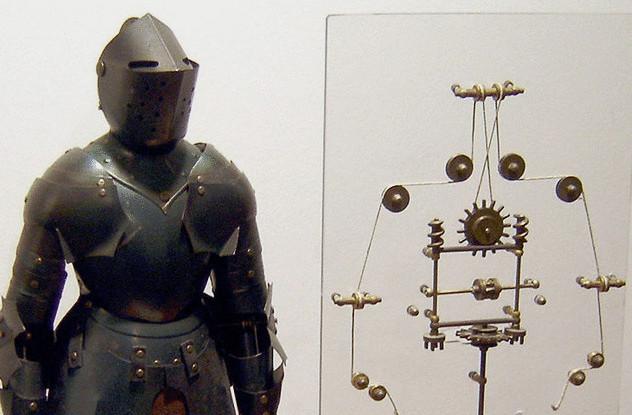
No discussion of ancient robots is not complete without mention of the merits of Leonardo da Vinci. Given the genius of da Vinci, there is nothing surprising in the fact that he dabbled in the creation of artificial humans and animals.
Leonardo studied the work of Heron and combined knowledge and experience of the scientist with his own knowledge of anatomy, working with metals and sculpture to create their own artificial beings. By understanding the mechanics of the movements of humans and animals (kinesiology), Leonardo was able to build mechanical models of muscles and joints. A few missing pages from the notebook of Leonardo's Codex Atlanticus could be allotted to the robotics.
For the competition in Milan, Leonardo built a fully armored knight that could move independently. With the help of pulleys, weights and gear knight could sit, stand, move your head and raise the visor. Using fragments of descriptions that remained from those times, robotics mark Rosheim recreated knight in 2002. Robotic design Leonardo was so effective that served as the inspiration for their own robots Rosheim NASA.
Another creation of Leonardo lion was presented to king Francis I of France in 1515. Leo was able to walk by himself. When he stopped, his chest was revealed and it turned out to be bouquets of roses and lilies. In 2009 the lion was created according to the drawings of Leonardo.
The praying monk
Janelle, Torriano was one of the best Italian watchmakers of the 16th century. He entered the service of the Emperor Charles V in 1529 and went with him to the monastery in San-Yustra after the abdication of Charles in 1555. Torriano was trying to lighten the depression of the Emperor, creating a small automatons for his entertainment.
Torriano were miniature soldiers who fought on the dining table. It is reported that he carved from wood small birds, and they flew around the room and even on the street. One automaton, Lady lotnisku, can be seen in the Museum of art history in Vienna. It is no longer working, but still able to do small steps along a straight or curved line, strum the lute right hand and tilt your head.
At the Smithsonian, however, has a working device, attributed to Torriano — 39-inch praying monk. Automaton of wood and iron goes on the area and beats his chest with his right hand, his left fingering a rosary, sometimes kissing them. He can turn and nod the head, roll his eyes and whisper silent prayers.
The legend says that when don Carlos, the young son of Philip II, died from head injuries, after receiving it in the fall, Philip and all of Spain prayed for a miracle. Next to the boy placed the relics of the monk Diego de alcalá, which has been dead for a hundred years. That night don Carlos was the spirit of the monk and said that the boy will recover. Don Carlos regained consciousness and subsequently recovered. Grateful to Philip instructed Torriano to create an image of St. Diego. Praying monk, scientific miracle, was the answer of Philip to the Holy miracle. San Diego, California was also named in honor of Diego de Alcalá.
Karakuri Ningyo
The Japanese love for robots is rooted deep in the past. Japan's first robot was created in the Edo period (1603 – 1868). It was called karakuri Ningyo (mechanical doll) and it was collected from wood, string and screws. The Japanese also borrowed Western clockwork for this automaton.
Even more common were the zashiki karakuri, small household robots, whose purpose was to entertain the Japanese. They could shoot a bow, for example. Some karakuri could even entertain guests tea. If you recall the mechanism of Philo, robots, karakuri also activated after placing the Cup on the arm of the automaton. And if you remember the robotic cart Heron, thanks to a custom string, it was possible to program the movement of the karakuri on the Mat in two directions.
Was more Dashi karakuri, which were used during religious processions at festivals, like a moving statue Cecilia. These automatons played the ancient myths and legends. Butai karakuri, or theatrical automatons, also used for presentations. The Japanese loved these miniature actors, movements which tried to replicate the people — and not Vice versa as you might think.
"The flutist"

Voltaire called genius mechanics Jacques de Vaucanson the "New Prometheus" for his incredible power to give life to inanimate matter. While still quite a child, Jacques studied Church clock, waiting for his mother to finish confession. Jacques remembered all the details and recreating them at home. A little grown up, began to experiment with the automaton. Once Jacques ill and in delirium, he was visited Android-flutist. When Jacques got to his feet, he immediately began to bring the robot into reality.
First presented on 11 February 1738, "Flutist" was almost impossible for the construction of the machine; given the fact that the flute is one of the most difficult instruments to play in tune with real people "Flautist" was incredibly hard. However, Jacques de Vaucanson managed to create a robot so that he could play 12 different melodies. All the mechanisms were built to simulate every muscle involved in playing the flute.
Through a system of bellows, tubes weights and Jacques could control the air flowing through the passages. He designed the lips that could open, close and move back and forth. A metal tongue regulated air flow and created pauses. Robot Jacques really was breathing.
The problem faced by Jacques was in his fingers — wooden fingers were too stiff to give the desired sounds, despite the fact that all the levers work correctly. To simulate real fingers, Jacques coated wooden limbs in real leather, making them soft.
Jacques de Vaucanson made other automatons, the most famous of which was a duck that defecated after eating. But, unlike the Organist, the duck was rather amusing trinket than worthwhile project for the reconstruction of the functions of a living being.
"The writer"
In the Museum of art and history in neuchâtel, West of Bern, Switzerland, for the mahogany table sits a three year old barefooted boy and writes out full words with a quill pen with his right hand. What at first glance seems charming toy doll really is a miracle of engineering craft: the ancestor of the modern computer. Take a closer look and see how his eyes follow what the hands are doing. The boy shakes a quill pen after dipping it into the inkwell.
Created by a watchmaker of Swiss origin by Pierre Jaquet-Droz in the late 1770s, "Writer" consists of 6,000 individual components that work together to create a fully Autonomous programmable typewriter. The boy can write any text of forty words in four lines with 40 knuckles, which only work as a reader. This system allows you to write text without any outside interference. "Writer" may even be interrupted in the middle of the line and start writing new text.
Jaquet-Droz was able to surprise people with his automatons. In the court of king Ferdinand VI of the Spanish people were convinced that the creation of Jaquet-Droz was a kind of witchcraft. To avoid accusations of witchcraft from the Inquisition, Jacquet-Droz invited the Grand Inquisitor, and introduced him to the robot and its internal mechanism for learning. No magic.
"Writer" was one of the three androids created by Jacquet-Droz from 1767 to 1774. Two other, less complicated than "Writer", presents Lady-Musician and the Draughtsman. These robots are interesting miniaturization of the internal mechanisms. They are enclosed in bodies, and not on the furniture nearby, as is usually the case. Miniaturization required a more complex configuration of all parts of mechanism, but thanks to this, the robots continue to function 200 years after creation. And this amazing.
"Drawer boy"
The exhibition at the Franklin Institute in Philadelphia automaton age more than two hundred years — "Drawer boy" — continues the tradition of mechanical magic, launched "Writer". "Drawer boy" is a masterpiece of another Swiss watchmaker, Henri Mallard. As "the Writer", he inspired Martin Scorsese's film "Hugo," in which an automaton plays a supporting role.
"Drawer boy" is shocking in its complexity. Collection of copper rotating Cam precisely controls incredibly smooth and realistic motion of the hands. It is not a simple geometry like moving the hands on the axis x, y or z. To draw a straight diagonal line, for example, the hand must constantly be rotated, otherwise it will draw an arc.
After start the robot, he can draw for three minutes. In the process you would have many Cams, and if you need another picture, the machine must move the entire stack of Cams to 3 mm, to move to a different stack, otherwise the whole process will be broken. Incredible accuracy is achieved by the fact that almost all parts were made by hand. "Drawer boy" could write three poems (two in French and one in English) and to perform four drawings, including a Chinese temple.
Some simple Cams control the movements of the eyes and head. In the process, fine process, the boy stops at the moment when the Cam stack shifts, raises his head and momentarily looks off into the distance, as if thinking what to draw next. Then he lowers his head, and the hand continues to create.
Source: hi-news.ru
